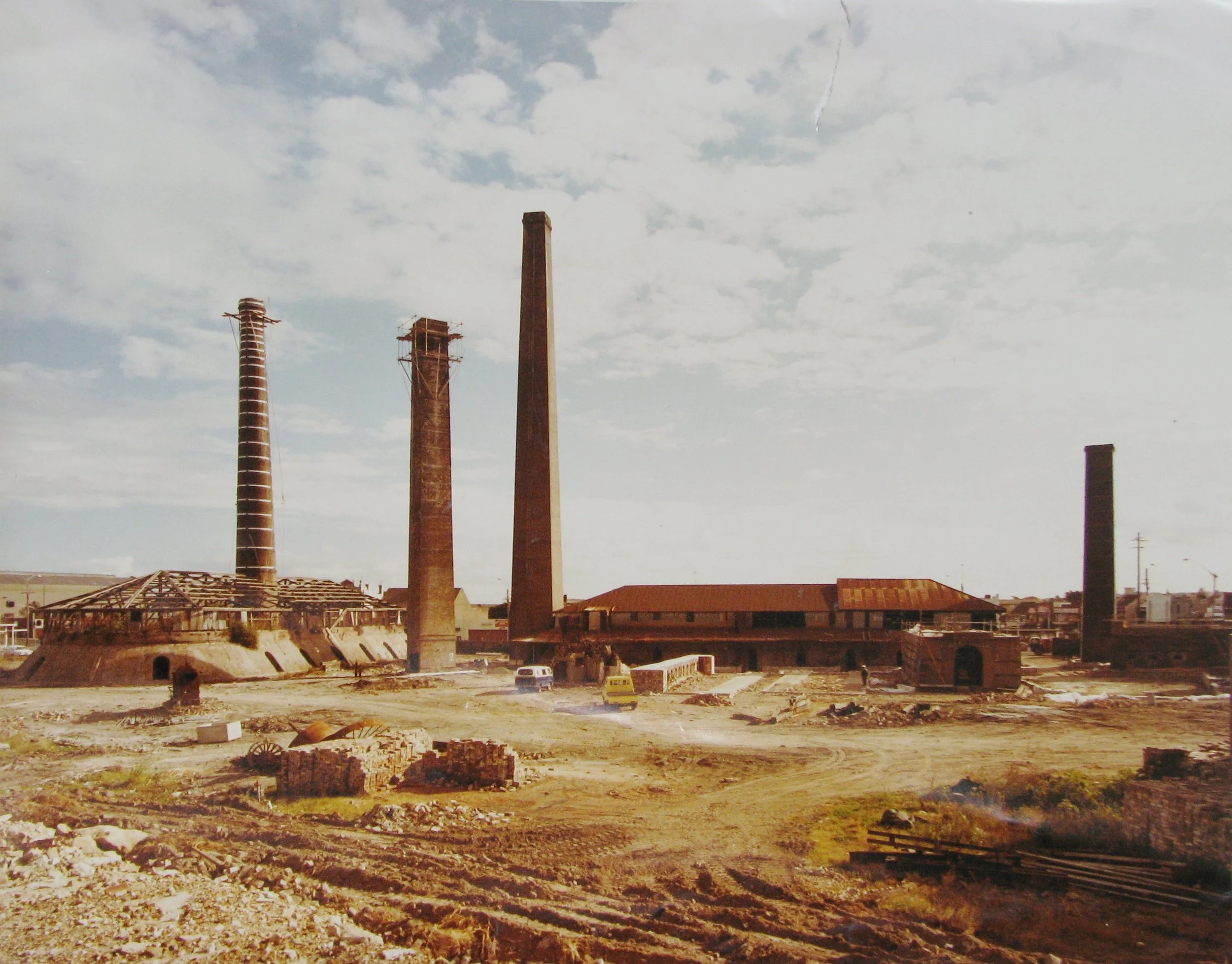SYDNEY PARK WATER REUSE PROJECT
SYDNEY _ AUSTRALIA
St Peters Brickworks, (City of Sydney Archives, SRC17506, 1984)
DESIGN AGENDA FOR sydney park water reuse project
Turf Design Studio addresses the sites’ previous issue with contaminated soils by layering more ‘clean fill’ soil to further cap the contaminated fill. They also use the excess soil from the site’s construction phase to create a base layer which can be further modified and shaped into mounds and formations in the parklands (refer to diagrams on next page).
Remediation of the site is further shown through it’s transformation from an industrial wasteland to a key component in the Sustainable Sydney 2030 targets for local water capture and reuse. The project harvests 850 million litres of water a year from the Newtown catchment and returns filtered water through this dynamic waterscape (Architecture AU 2016).
The project’s first stage of infrastructure in May 2011 used a diversion pipeline from a stormwater catchment at Barwon Park Road. The catchment water flows through a gross pollutant trap and is then filtered through a bio retention treatment system before going through the parklands wetland system (Architecture AU 2016).
The second stage of infrastructure now pumps up to 1000 litres of stormwater from Munni Channel into Sydney Park. This stormwater goes through a gross pollutant trap and is filtered by bioretention beds (approximately 500m²) which flank the three major wetland bodies in the parklands (Architecture AU 2016)
Sydney Park Water Re-Use Project / Turf Design Studio, Environmental Partnership, Alluvium, Turpin+Crawford, Dragonfly and Partridge: Image from (Arch Daily, 2016)
CONTEXT OF sydney park water reuse project
The site, located in Sydney’s St Peters, has attracted a range of different functions over the course of its history. This is primarily due to the rich alluvial soil that can be found in the area. Prior to the industrialisation, the landscape was composed of a combination of marshland, heathland, swamps and Wianamatta Shale forest, and showed great importance as a hunting ground for the Gadigal and Wangal people. Over the 19th century, the site became a perfect opportunity for industrialisation particularly because of the availability of clay, which was ideal for pottery and brick making.
In 1991 when the St Peters tip was closed, a layer of soil and building rubble was placed over the site to fill the land and create a new regional park (City of Sydney 2007). Since the site’s former post-industrial use and waste disposal history, much has been achieved over the past two decades to transform the Sydney Park site into 44 hectares of parkland and a valuable asset for the growing communities of Sydney’s southern suburbs.
The project was led by landscape architects Turf Design Studio and Environmental Partnership who orchestrated a multi-disciplinary collaboration intersecting design, art, science and ecology. This was done through a team of experts including water specialists from Alluvium, artists from Turpin + Crawford Studio, ecologists from Dragonfly Environmental, engineers from Partridge and Sydney’s own Landscape Architects (Turf Design 2018).
Sydney Park Water Re-Use Project / Turf Design Studio, Environmental Partnership, Alluvium, Turpin+Crawford, Dragonfly and Partridge: Image from (Arch Daily, 2016)
monitoring, maintenance & effectiveness
The Park is overall very successful in terms of site remediation, and has transformed difficult site conditions of contaminated soil with an industrial history into a safe, recreational space. The Sydney Park Project is especially effective considering water reuse and filtration. Stormwater has been channeled from catchments in Newtown, Barwon Park and the Munni channel, and redirected to the site to be filtered through a series of bioretention wetlands. This targets local capture and reuse, and plays a key component to achieve the goal for a Sustainable Sydney by 2030. Not only does this physically remediate the contents of the site, but also develops a focus towards recycled water in the users of the space.


